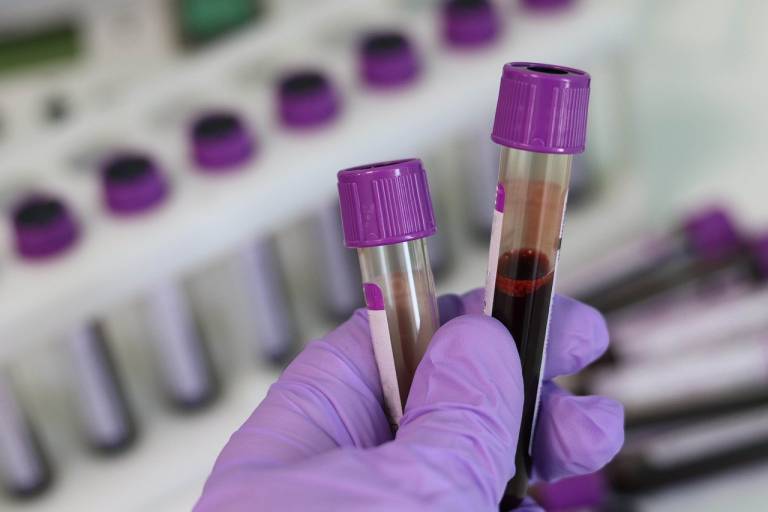New insights into how immune cells behave in Motor Neuron Disease
2 December 2022
With thanks to the Motor Neurone Disease Association who interviewed Professor Andrea Malaspina and Dr Ozlem Yildiz about their research.

What did this work focus on?
It is thought that changes occur in the immune system during the course of the disease and that immune cells may transform from being neuroprotective to being neurotoxic. Alterations in the behaviour of cells of the immune system have been suggested to contribute to disease progression and survival.
In this study, we analysed samples from people with slow and fast progressing MND separately. We looked at specific types of immune cells with a focus on cells that change with ageing to see how these changes might contribute to the disease. Symptoms of MND usually appear after the age of 50 and that is why ageing is thought to play a significant role in the disease. We also observe that the older the age of onset, the more rapid the disease progression and this may be due to the fact that as cells age, they may lose their function or start to function abnormally.
What did you find in this research?
We have shown that in people living with MND, there is a higher number of specific B and T lymphocytes showing features of senescence similar to what has been previously observed during the ageing process and in viral infections. We also found that higher amounts of these cells in the blood is linked to a worse prognosis of the disease. This suggests that changes in the immune system might be involved in the development and progression of MND.
There has also been another paper published by a group of American researchers which has shown similar findings in a type of genetic MND using animal models of the disease. This study underlines our findings and helps to provide further evidence that the immune system seems to play a role in motor neuron damage in MND.
What does this mean for people living with MND?
Our research has helped to highlight that there are several factors involved in motor neuron death in MND. It was previously thought that cell death was due to altered behaviour of certain proteins that become toxic in the disease, but this study has increased evidence that the immune system also contributes to motor neuron damage and death. It has been suggested that these faulty proteins may trigger a response from the immune system which is excessive and could harm surrounding neurons. A successful therapy may be about targeting these toxic proteins and the immune response they generate. Bringing immune cells out of this unhealthy, potentially damaging senescent state may be a part of this strategy.
What are the next steps for this work?
Although the study has helped to identify one of the immune changes that appears to be involved in MND, more studies are needed to uncover more about the immune cells that play a key role in MND and further understand the changes that occur. Further research in this area may help to increase our understanding of the mechanisms behind the disease which could lead to the identification of new biomarkers and potential therapeutic targets.
We wish to thank Andrea and Ozlem for taking the time to talk to us about this research.
Links
- Yildiz O, Schroth J, Tree T, Turner MR, Shaw PJ, Henson SM, Malaspina A. Senescent-like Blood Lymphocytes and Disease Progression in Amyotrophic Lateral Sclerosis. Neurol Neuroimmunol Neuroinflamm. 2022 Nov 2;10(1):e200042. doi: 10.1212/NXI.0000000000200042.
- ALS Biomarkers Study
- UCL Queen Square Motor Neuron Disease Centre
- Professor Andrea Malaspina's academic profile
 Close
Close


